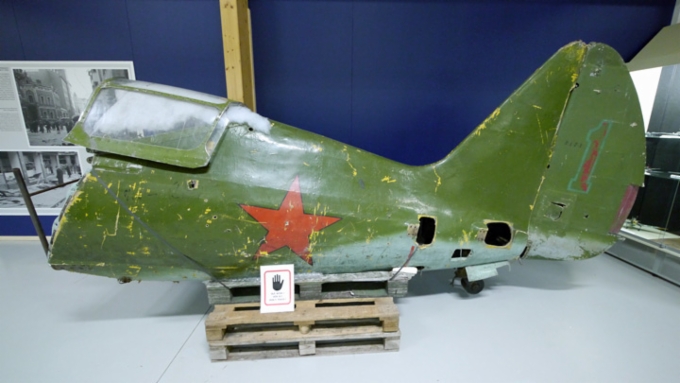MiG-3
25.10.1939 uudelleen muodostettu OKO-1 sai tehtävän suunnitella torjuntahävittäjä, jonka suorituskyky oli optimoitu 6 000 metrin korkeudella tapahtuvaa toimintaa varten. Suunnittelutyön aloitti Nikolai Polikarpov mutta Artyom Mikoyan, Mikhail Gurevich ja Vladimir Romodin veivät projektin päätökseen. Suunnittelussa pyrittiin minimoimaan sekä lentorangon koko että kevytmetallien käyttö. I-200:ksi tässä vaiheessa nimetyn koneen ensimmäinen prototyyppi lensi ensilentonsa 5.4.1940 ja toinen 9.5.1940. 9.12.1940 kone sai nimekseen MiG-1. Konetta rakennettiin 100 kpl ja niistä ensimmäiset pääsivät laivuekäyttöön vuoden 1941 alussa. Nopeasti tuotantoon laitetusta koneesta löytyi paljon puutteita, joita korjattiin seuraavaan malliin, joka sai nimekseen MiG-3. Sen prototyyppi I-200 No 4 lensi ensilentonsa 29.10.1940. MiG-tuotannon laatuongelmat johtivat kenraalimajuri A.I. Filinin teloitukseen kesällä 1941. Koneen tuotanto lopetettiin vuonna 1942 hieman yli 3 000 koneen jälkeen. MiG-3 oli vuonna 1941 maailman nopein (640 km/h 7 800 metrin korkeudessa) sarjatuotannossa oleva hävittäjäkone. Matalalla se menetti nopeusetuaan ja oli kömpelö. Yksi MiG-3 teki pakkolaskun 12.7.1941 lähelle Uttia. Koneen kunnostamista harkittiin mutta siitä luovuttiin. Koneesta on jäljellä ainakin takarunko ja osa siipiä.
Koneen tunnus: 1
Koneen takarunko ja pienosia on nähtävillä Ilmatorjuntamuseossa. Koneen siivet ovat nähtävillä Päijät-Hämeen Ilmailumuseossa. Kone on hylky: takarunko, pyrstö ja siivet.
The newly formed OKO-1 got on October 25th 1939 task to design an interceptor with optimum performance at 6,000 m. The initial work has been made by Nikolai Polikarpov but Artyom Mikoyan, Mikhail Gurevich and Vladimir Romodin managed the project to the goal. One of the design objectives was to produce smallest possible airframe. Another objective was to minimise the use of light alloys. The first prototype of I-200 flew on April 5th 1940 and another on May 9th 1940. On December 9th 1940 the aircraft renamed to MiG-1. The total production of the type was 100. Due to rapid transfer from design to production, the aircraft had a lot of shortcomings. They were fixed in next type, MiG-3. Due to quality problems of MiG-1 production, Major General A.I. Filin was executed in summer 1941. The production of MiG-3 terminated in 1942 after little over 3,000 produced MiG-3s. The MiG-3 was the fastest (640 km/h at 7,800 m) series production fighter in 1941. At lower altitudes it lost speed and its maneuverabilities. One MiG-3 made a forced landing near Utti on July 12th 1941. The aircraft was in quite good condition but it was not been repaired. At least rear fuselage, tail section and wings remain still.
Aircraft code: 1
The rear fuselage and some parts of the aircraft are on the show of the Anti-Aircraft Museum at Hyrylä in Tuusula. The wings are on the show of the Päijänne-Tavastia Aviation Museum. The aircraft is a wreck: rear fuselage, tail and wings.



